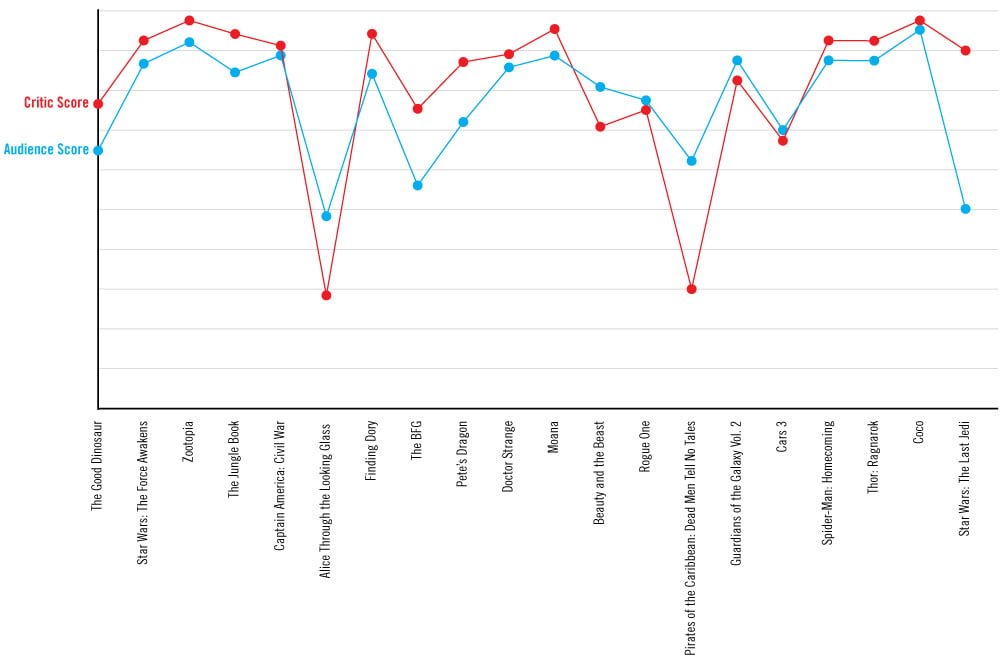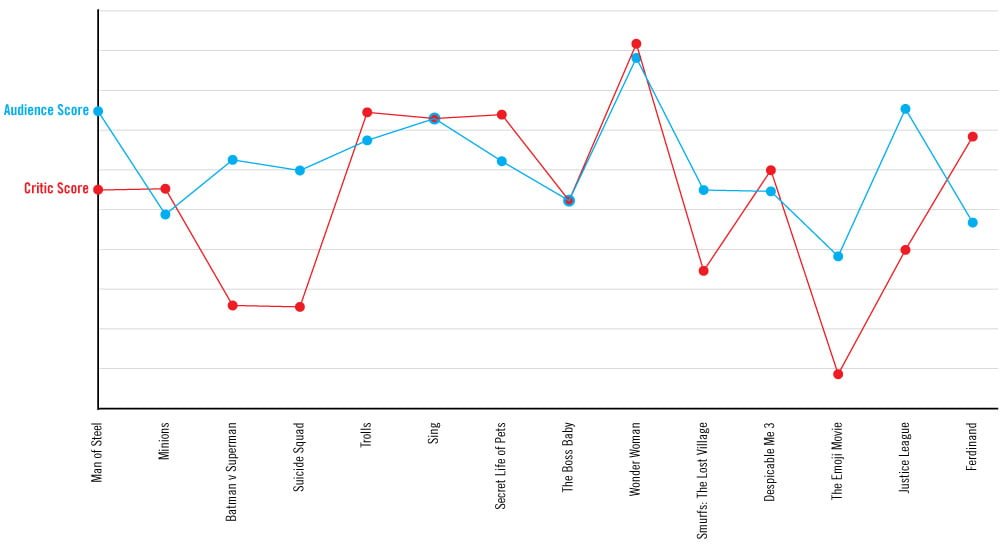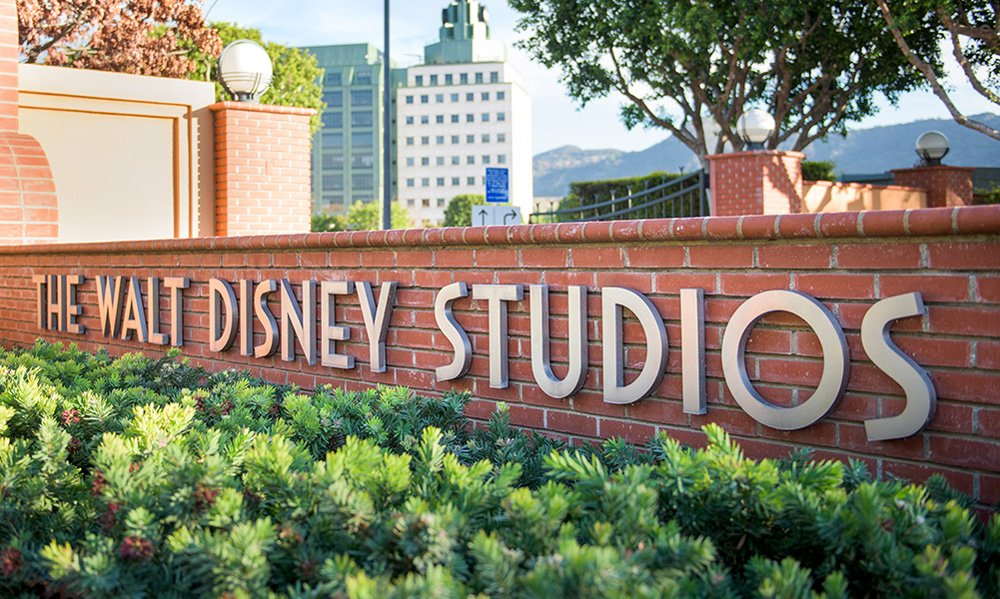One of the biggest stories of late last year was the disconnect between the critical reception and the general audience reception of ‘Star Wars: The Last Jedi’. Review aggregation site RottenTomatoes.com, which outputs the percentage of positive reviews as it’s “tomatometer score,” displayed to divide most clearly. ‘The Last Jedi’ enjoyed a professional critic’s tomatometer score of 90% while the percentage of audience members who liked the movie was only 49%. There has since been a slew of think pieces written about why this occurred blaming everything from public sexism to bots. This post is not one of them.
What this post suggests will not account for ‘The Last Jedi’ divide specifically, but rather explore a general critical bias toward Disney films. Let’s get right to the evidence.

Above is a chart mapping the critic and audience tomatometer scores of the biggest Disney movies since ‘The Good Dinosaur,’ including Pixar and Marvel Studio offerings. As you can see, most films enjoy more love from critics than audiences. The most extreme exceptions are ‘Alice Through The Looking Glass’ and ‘Pirates of The Caribbean: Dead Men Tell No Tales’, both sequels to stale franchises. (Of course, ‘Alice’ only had one movie prior, but the film suffers from the Tim-Burton-esque style more at home in the 90s.) We can only speculate as to why these films are outliers. Perhaps critics are more sensitive to retreading old ground than general film goers.

This chart maps out the critic and audience tomatometer scores of Disney’s most direct competition— that is, other animated features and non-Marvel superhero films. Here we see the audience score more often higher than the critic’s score. The critics were especially hard on movies set in DC’s Extended Universe with ‘Batman v Superman’ serving as an inverse example to ‘The Last Jedi’. What is the relevant distinction between the two? The average professional critic would say that the distinction is that ‘The Last Jedi’ is good while ‘Batman v Superman’ is bad. The unwashed masses seem to disagree. Well, “masses” may be a misleading word. A larger segment of the population went to see ‘The Last Jedi’, one: because it’s Star Wars and two: because Rottontomatoes.com, which only displays the professional critic’s score front and center, has become very important to box office numbers. Therein lies the obvious motivation for studios like Disney to woo critics.
One’s love or hate for any given film is, of course, subjective and for that reason, no single example may be used to point to anything suspicious. However, this is a pattern that shows that the majority of Disney films fare better than other studio’s equivalent films with those who are specifically paid to review movies. The nature of modern professional critics makes them susceptible to incentives powerful studios offer and Disney has already demonstrated its willingness to throw around its weight. Last year, the Walt Disney Company blacklisted Los Angeles Times critics from receiving advance press screenings because the media outlet ran a piece that put Disney business policies in a negative light. Such press screenings are a big deal for an outlet as big as the LA Times because, without them, their competitors will have time-sensitive reviews and editorials up first and thereby get more clicks. The LA Times ban didn’t last long, but only because the news went public enough to create a backlash.
The possibility of public outrage is primarily what keeps companies like Disney from paying for good press. For that reason, the studio would never make it explicit to the critical community that punishment will befall those who give ‘The Last Jedi’ a C-. Past actions simply imply it. This is not only problematic, it would account for a divide between professional and public opinion much like what we see today.

